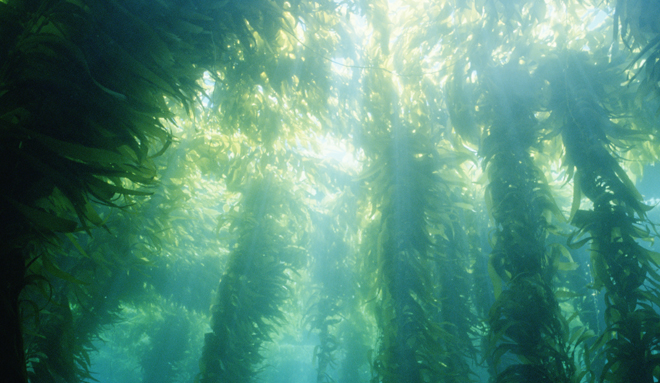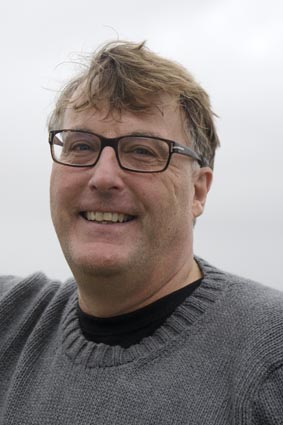Project turns algae problem on its head
Technology making algae blooms a source of energy, food, medicine and more

Algae is being upgraded from an environmental problem to a valuable natural resource and raw material.
“The fact is that algae can absorb nitrogen from the water as effectively as a wastewater treatment plant,” says Fredrik Gröndahl, a KTH Royal Institute of Technology researcher and head of the Seafarm project, which converts algae into eco-friendly food, medicine, plastic and energy.
The excessive fertilisation (eutrophication) of our seas produces an over-production of algae. Bathing beaches become unusable on account of algae blooms and entire ecosystems can be threatened.
“However, in our research, we turn the argument on its head and see algae as a resource. We collect excess algae along the coasts and cultivate new algae out at sea,” Gröndahl says.
Wild algae get scooped up from the Baltic Sea, along Sweden’s southern coast, in order to be converted to biogas. And along the beaches of the city of Trelleborg there is, according to Trelleborg Municipality, an excess of algae that is equivalent to the energy from 2.8 million litres of diesel fuel.
Almost three quarters of the earth’s surface is covered by sea, and the seas possess as great a production capacity as the land. At the present time, humankind utilises 40 per cent of the production from land-based ecosystems whereas only 1 per cent of the seas’ ecosystems are currently utilised.
Unfortunately, this percentage at present consists largely of ruthless exploitation; where the fishing industry trawls up every living thing and hoovers the sea bottoms. “We really need new solutions, such as harvesting the excess algae for fuel and cultivating new, pure algae for special products and foodstuffs,” Gröndahl says.
Algae that enhance the marine environment
Fredrik Gröndahl points out that algae contain vitamins, amino acids and minerals, indeed the entire list of the periodic elements, including iron. Algae may be eaten directly or cooked; and in recent years an interest in algae products in foodstuffs has increased in Sweden, thanks in part to the popularity of Asian food culture. Even spices and cooking oil can be produced by algae.
The brown algae known as sugar kelp (Saccharina latissima), for example, contain up to three times as much sugar as sugar beet. “Of course, it’s unwise to burden the earth with oil palm and sugar beet cultivation when corresponding products can be produced in an ecologically sustainable way from algae,” explains Gröndahl.
Algae may, in the future, be an ingredient of animal feed to replace the environmentally damaging fish meal which is common in pig and poultry diets.

Furthermore, salmon today is fed with fishmeal from wild caught fish, and calculations show that no less than 5 kg of wild fish go to produce 1 kg of farmed fish.
“Clearly, it’s not a good idea to feed fish with fish. Algae feed, in this case, will be of great benefit for the environment,” he says. “What’s more, we’re counting on Seafarm’s cultivation of algae being able to favour the marine environment as a whole, since they form secondary reefs in free bodies of water. This sort of reef attracts fish and other animal species.
“What’s more, we’re also acting to help the environment. Partly, when we make use of the excess algae which otherwise contribute to the excess fertilisation of water bodies and partly when we cultivate algae that actually absorb nitrogen and phosphorus from the sea.”
Cultivation in barrels at sea
One fast-growing algae species that has been selected for Seafarm’s algaculture is sugar kelp – a common type of kelp.
Algaculture resembles mussel farming; consisting as it does of drums and ropes on which the algae are suspended. In wintertime the cultivation can be lowered deeper in the water to avoid ice formation.
The coasts of Sweden, according to Gröndahl, are perfect for the cultivation of large algae (macroalgae) – there are plentiful archipelagos and well-sheltered areas. The only thing required is sunlight in order for the algae to grow by a couple of metres per season. The first alga farm is already up and running, near the Swedish town of Strömstad, in the waters that separate the country from Denmark.
What then are the disadvantages of Seafarm’s algaculture?
For some people, it is true, there is a visual problem since the bays along the coast are filled with barrels, explains Fredrik Gröndahl. ‘Not in the bay where I bathe!’ may well be the reaction. “We expect that it will take time to create acceptance for this type of project,” he concedes.
Another problem the researchers will investigate, in more detail, is that really large cultivations of algae may prove to have a certain wave-damping effect that can influence movements in the water and the marine environment. A certain quantity of algae may fall to the bottom and create local oxygen deficiency when broken down. This is not expected to be a major problem, however.
Energy forests at sea
The Seafarm project will, according to Gröndahl, contribute to the sustainable development of rural districts in Sweden.
“We create all-year-round jobs,” says Gröndahl. One example is in the so-called sporophyte factory farms on land, where to begin with the algae are sown on the ropes. When miniature plants (sporophytes) have been formed they sink and are able to grow in the sea.
When the algae, after about six months, have grown on the ropes they are harvested and processed on land through biorefining processes.
“It will be an energy forest at sea. We plan to build large farms on 2 hectares right from the start, since the interest in the activities will grow rapidly when more farmers and entrepreneurs wake up to the opportunities and come into the picture…”
“My vision is that in 15 years time, we will have many large algae cultivations along our coasts; and Seafarm will have contributed to the creation of a new industry from which people can make a living.”
Katarina Ahlfort

